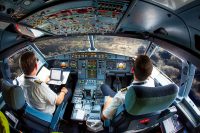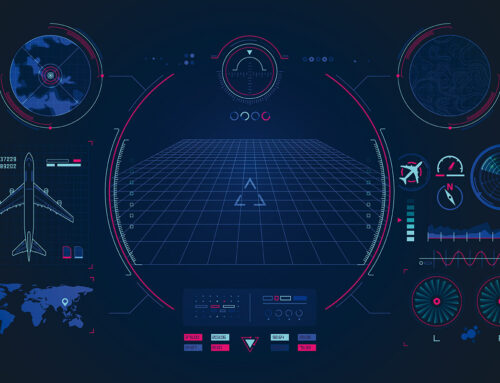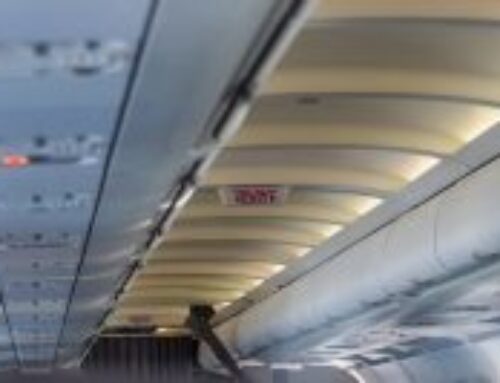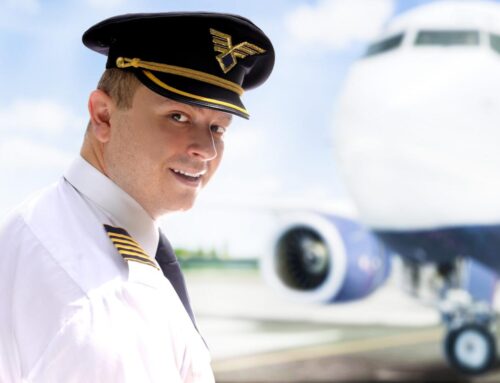The brain of the plane: the cockpit

There is a part of the plane that always arouses great interest, even in children who are fascinated by it from the first flight; not to mention those who aspire to become an airline pilot! It’s time to talk about the cockpit.
The cockpit is the part of the aircraft that offers visibility to the front and sides and accommodates the pilots: a short distance from the seated crew, the cockpit contains all the display, control and communication equipment needed by the members of the crew to operate and navigate the aircraft on the ground and in flight, speak to the ground installations or other aircraft, and monitor or control on-board systems and equipment (engines, fuel tanks, air conditioning, etc.).
In all types of aircraft there is always an instrument panel located in front of the pilots to display the information required for navigation and flight control: without going back to the Wright brothers, whose Flyer had no seat nor cockpit (the pilot was simply perched in the open air between the splints and supports that made up the fuselage of the aircraft), the instrument panel has been present on aircraft since the first thirty years of aviation history.
In the first aircraft, visibility was good within the cockpit, so that the pilot could orient the movements of the aircraft during take-off and descent by looking directly outside. In the 1930s, however, dashboards were equipped with a wider range of complex instruments so as to allow pilots to fly at night and in conditions of poor visibility.
Further progress was made in the 1950s, when instruments were introduced to allow planes to land in poor weather conditions. And so over time the instruments available to pilots have increased, offering greater functionality and autonomy compared to the external environment.
Ergonomics, a key factor in the evolution of the cockpit
As a vital interface between an aircraft and its crew, the cockpit of a modern aircraft must provide – instantly and in a practical way – all the information the crew needs to evaluate the state of the aircraft and take appropriate action, regardless of the circumstances.
For this reason we can say that the cockpit is the real brain of an aircraft that allows the pilot to use his/her senses, brain and movements to control an extraordinarily complex machine like the aircraft in an environment that human beings are not naturally accustomed to living in.
The cockpit must, therefore, offer a comfortable environment, because it is theoffice where the pilot works: the ergonomics of the cockpit naturally contributes to the comfort and performance of the crew. The factors to consider are also: the ability to reach the controls effortlessly from a seated position; the visibility of the flight instruments without an excessive effort; the minimum visibility outside the cockpit as well as an easy oral communication inside the cockpit.
The elements of the cockpit
Although there are significant variations in the layout of the cockpit from one aircraft to another, the most common components of an aircraft cockpit are more or less always the same:
– the dashboard panel;
– the side panels, on the sides of the pilots’ seats and under the side windshield, used – like all additional surfaces – to display information and accommodate the increasing number of aircraft controls;
– the autopilot system;
– the motor control unit, which is located further down;
– the displays that show the artificial horizon (attitude indicator) and the status of the engines;
– seats for pilot and first officer;
– the control wheel or the joystick/side stick, depending on the aircraft model, and
– rudder pedals.
The digitization of the physical data necessary for flight control and navigation, as well as for more general operational and information purposes, has led to a deep change in the cockpits of aircraft from the 1970s onwards. Thanks to improvements in electronics and information technology, data can now be converted from analog to digital format, processed by computers and displayed on screens in the cockpit.
The future of aviation will certainly see more and more instruments in the cockpit, but over time these will probably be more advanced, easier to read and to operate. Aircraft brain will also become smarter, just as we have seen today for other means of transport, such as cars.
All categories
Popular Posts
Recent Posts






